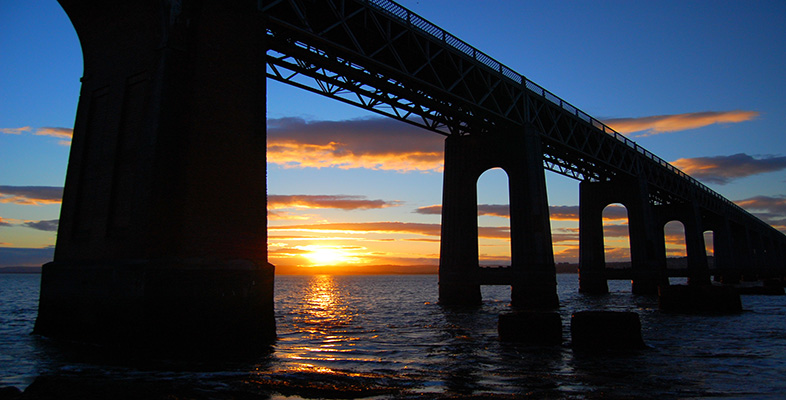5.3 Worker testimony
Bridge oscillations
Testimony was taken from the many workers employed during construction and painting of the structure just after completion. Their evidence was more compelling, especially from painters working at the top of the high girders piers during passage of trains, as well as during windy weather. They were painting the cast iron of the piers during the summer of 1879. In the main, they reported feeling strong sideways as well as vertical motion:
4916. Did the passing of the trains have any effect on the bridge? – Very much.
4917. What was its effects? – Oscillation, I would term it first, side to side movement.
4918. Was there any other movement? – Yes.
4919. What? – Vertical movement.
4920. With regard to the oscillation or lateral movement, was that severe? – Yes, it was very severe.
…
4940. What effect did you see the motion thus produced have on anything that was placed on the bridge? – I have seen the spilling of a pail of water a long while before the train approached. You could feel the oscillation half a mile off.
4941. But you have seen a pail of water upset? – No, not upset, only the water oscillating and spilling over the side.
4942. Had it any effect on the paint-pots? – We always secured them with every passing train.
…
4953. Were both those movements greatest inside or outside of the high girders? – Inside, about the centre.
Support for swaying of the bridge came from another worker, a Mr Stewart, a joiner from Dundee employed to provide boxing for the water pipe from Dundee to the south bank. When working in the high girders, he noticed strong vibrations:
5383. When the two movements got combined was there a severe movement of the particular place at which you were standing? – Yes, it would make an unaccustomed man feel a little strange.
5384. Not steady on his legs you mean? – Yes, that is the feeling; you felt the under part shaking under you.
5385. And you felt it shaking from side to side? – Yes.
5386. At the place where the movement was greatest, at the joining of the high and low girders, was it enough to produce alarm? – Well, I considered it weak there.
5387. What was weak? – That it was alarming.
5388. What was alarming? – The side movement.
5389. What did you think was weak at that place? – Well, I thought from the side movement that the columns must have given way.
5390. You mean that the bridge was weak? – Yes, exactly.
He then tries to quantify the movement in response to a question from Colonel Yolland:
5428a. (Colonel Yolland) At the time when you felt the side motion most you were over a pier, were you not, where the high girders and low girders meet? – Yes.
5429. Did you at that time look along the piers either to the north or the south so as to notice whether you were sensibly deflected to the east or to the west? – Yes, if you looked along the side of the girders.
5430. Did you form any opinion at the time to what extent the deflection took place? – I would say it was considerable but I could not say exactly in inches what it was.
5431. Did you form any opinion at the time? – Yes.
5432. What was it? – I would say from two to three inches.
5433. You formed an opinion, but you cannot say what it is now? – From two to three inches.
5434. Would that two to three inches be the extreme of the motion eastwards to the motion westwards, or was it half that quantity? – Well, I could not say; it was difficult to measure, but the motion was distinct and large.
5435 (Mr Trayner) And visible? – Yes.
